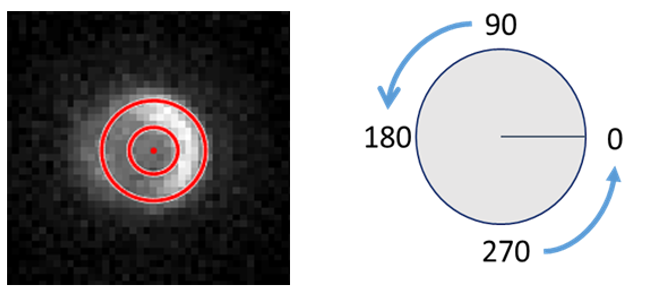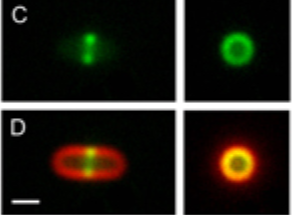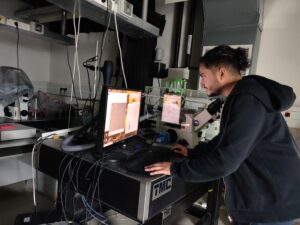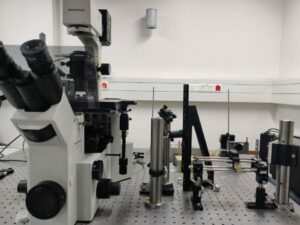Research
Laboratory for Single Cell Biophysics
Mario Feingold’s Group

Research Highlight
The mechanism of bacterial cell division is an unresolved problem in biology. E.coli is an ideal model for research on bacterial cell physiology because it is one of the most intensively studied subjects in biology. Our main goal is to understand the cell division process, particularly the septum formation mechanism at midcell. Bacterial division is the process in the cell cycle whereby the parent cell is divided into two daughter cells each with a copy of parental genetic information. The key initiator protein of the septum formation is Filamenting temperature-sensitive mutant Z protein (FtsZ). FtsZ is a tubulin like protein that polymerizes at the inner membrane of the cell to form a ring-like structure, commonly known as the Z-ring.
Phase Contrast + Fluorescent microscopy
To understand the correlations among the parameters of interest associated with the cell system, we have designed the relevant experiments and studied the inhomogeneous Z-ring of the slow growing E. coli cell embedded in agar. We expect this allow further understanding of the dynamics of FtsZ in the Z-ring and its correlation with peptidoglycan synthesis.

Optical Tweezers

Using single-beam, oscillating optical tweezers we can trap and rotate rod-shaped bacterial cells with respect to the optical axis. This technique allows imaging fluorescently labeled three-dimensional sub-cellular structures from different, optimized viewpoints.
Using single-beam, oscillating optical tweezers we can trap and rotate rod-shaped bacterial cells with respect to the optical axis. This technique allows imaging fluorescently labeled three-dimensional sub-cellular structures from different, optimized viewpoints.

Our Lab


